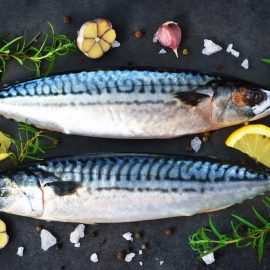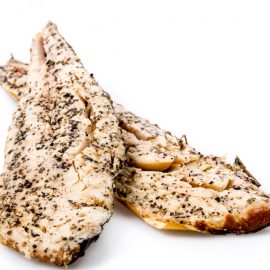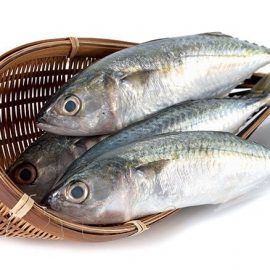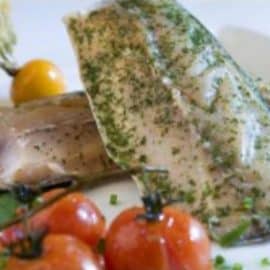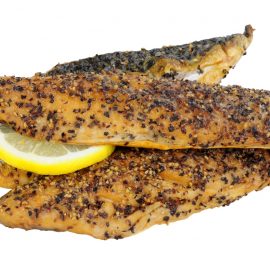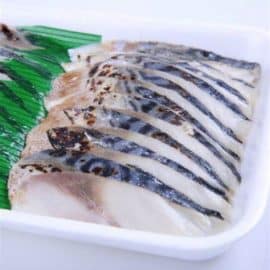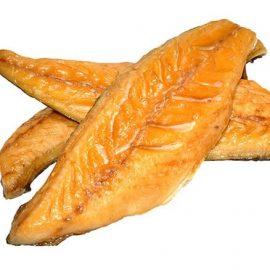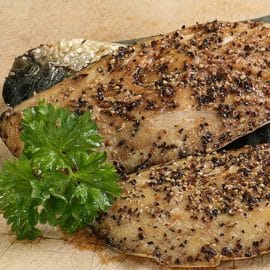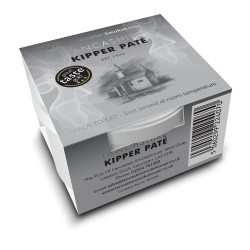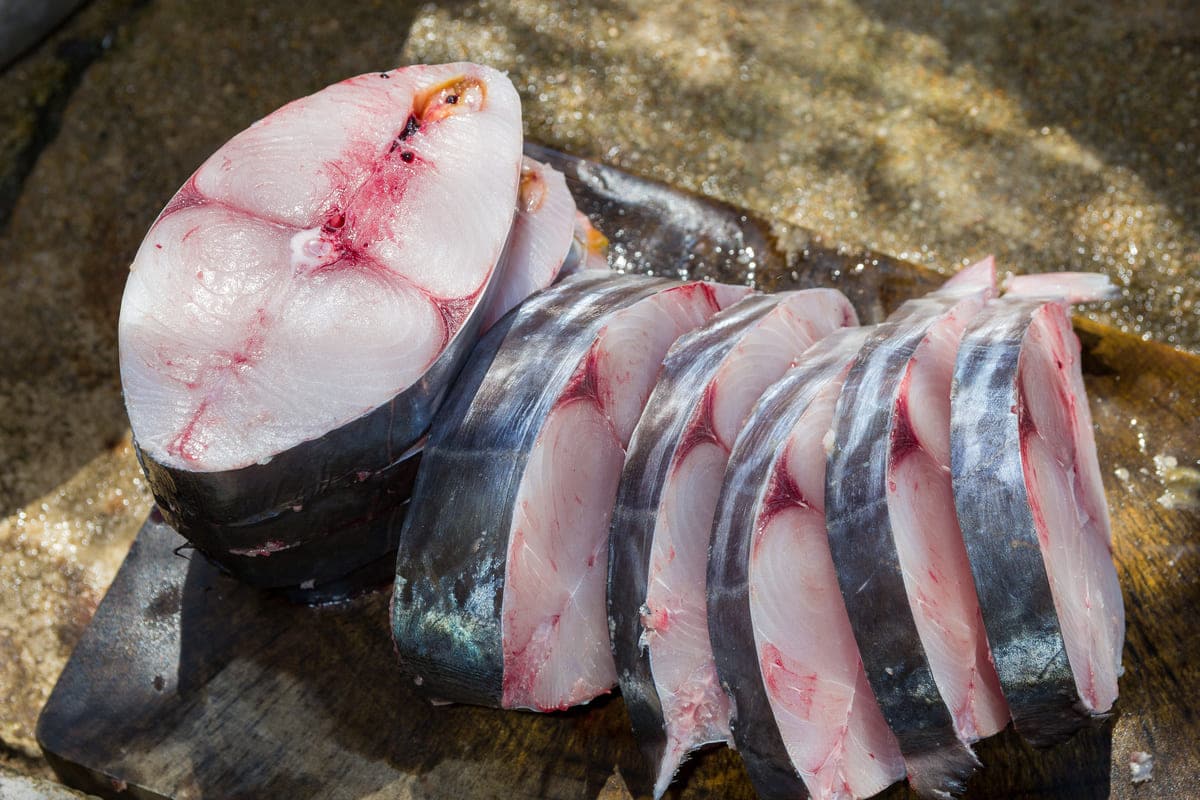
Introduction
The frozen king mackerel is a highly regarded seafood species because of its subtly sweet flavour and rich texture. It is often served with various sauces or seasonings to bring out the fish’s natural flavour.
It is highly valued for its nutritional content and provides an excellent source of omega-3 fatty acids. The most common way to prepare frozen king mackerel is to cook it on the stovetop or grill it with olive oil, garlic, lemon juice, and herbs.
The fish can also be served raw or smoked. Frozen king mackerel is often used as an ingredient in many popular dishes such as ceviche, sushi, and salads.
Description & Characteristics
King mackerel is a species of fish found in the waters of the Pacific and Atlantic Oceans. It is a popular seafood species for its mild flavour and light texture. Its popularity has resulted in it being widely commercially fished throughout its range.
The whole fish can reach up to 88 cm in length and weigh up to 20 kg. Its body is elongated with a pointed snout and two dorsal fins that are closely set together. The fish’s colouration varies from silvery blue to brownish green on the upper part of its body, fading to white on the underside. The scales are small and smooth, making them difficult to handle without damage.
Types Of King Mackerel
The most common type is the Atlantic king mackerel, which is typically sold in fillets or steaks and can be found in the seafood section of many supermarkets.
Other varieties of king mackerel include the Cero, Spanish Mackerel, and Kingfish. Each type has a distinct flavour and texture, but all are known for their rich taste and flaky texture when cooked..
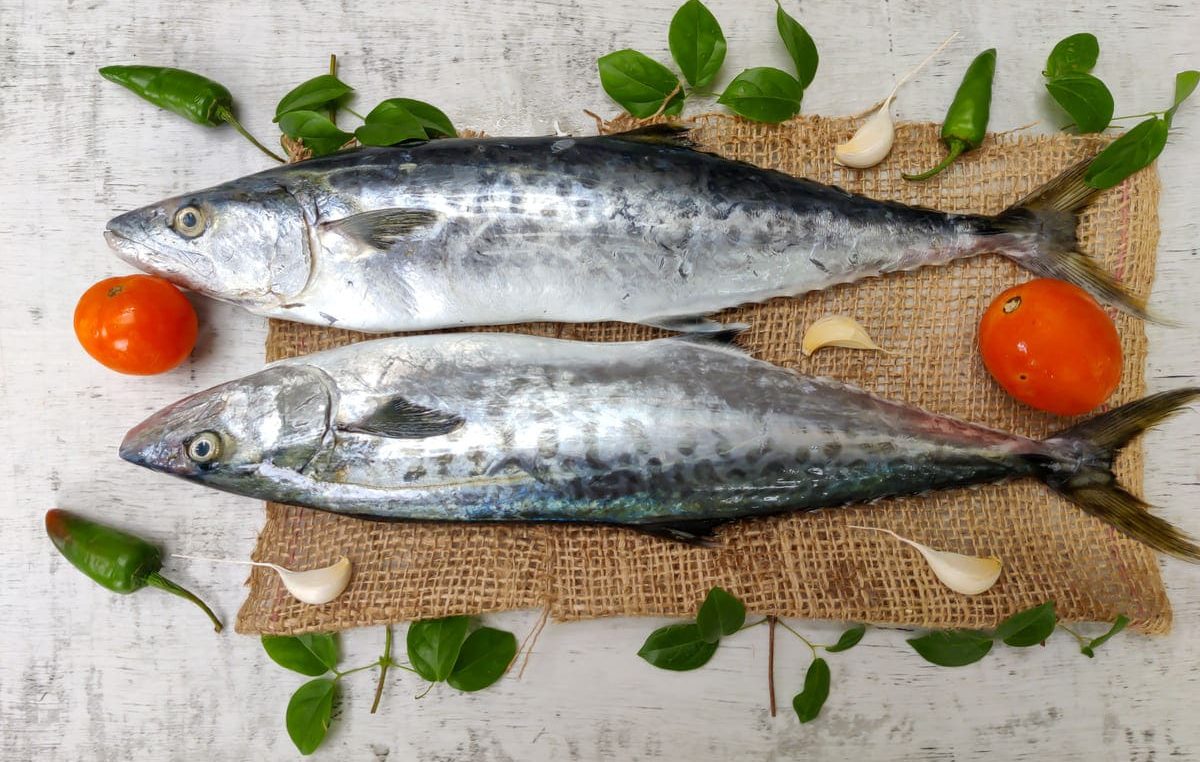
Processing
Processing Frozen King Mackerel is essential in the supply chain, ensuring the product’s quality, safety, and wholesomeness.
The process begins with proper sanitation and handling of the fish by all personnel involved in the production. This includes washing hands, wearing protective clothing and equipment, ensuring the cleanliness of all surfaces, and keeping track of temperature control.
After this step, king mackerel must be correctly prepared for freezing by cutting it into steaks or fillets and removing any scales or fins. During this process, any bacteria present on the surface should be removed.
Once frozen king mackerel is cut into steaks or fillets, it must be immediately placed into a blast chiller to rapidly cool the product to a temperature below 0°C (32°F). This rapid cooling process must occur as quickly as possible to prevent the growth of any spoilage organisms while also ensuring an even distribution of cold temperatures throughout the product is maintained.
After this step, frozen king mackerel can be stored at -18° C (0°F) until it is ready for packaging for sale to consumers. The product must then be adequately packaged in airtight containers so that moisture does not escape when shipped or stored in retail locations.
Once packaged for sale, frozen king mackerel should have a shelf life of up to 12 months when stored at -18°C (0°F).
To ensure that frozen king mackerel remains safe and wholesome during processing and storage, it is vital to adhere to food safety regulations such as HACCP (Hazard Analysis Critical Control Points), which outlines specific guidelines on how best to handle seafood products from catch through consumption. Additionally, traceability systems should be implemented to track provenance throughout the supply chain if needed.
By following these food safety guidelines and implementing traceability systems throughout the processing chain, companies can ensure that their customers receive high-quality products safely processed according to industry standards.
Frozen Mackerel As Food
Frozen king mackerel is a popular and nutritious option for individuals looking for a healthy source of protein. It is a versatile fish that can be prepared in various ways, from broiled to fried. Additionally, frozen king mackerel is affordable, with its price per pound much lower than other types of seafood.
When it comes to taste and texture, frozen king mackerel typically has a mild flavour and slightly firm texture. The flesh is white or light pink and can be cooked quickly using various methods such as grilling, baking, or sautéing. To ensure optimal flavour, it is necessary to cook the fish quickly so as not to overcook it and cause it to dry. As with most fish, cooking time will vary depending on the size of the filets.
No matter how frozen king mackerel is prepared, nutritionists recommend consuming at most four ounces per person per meal due to its high mercury content.
Furthermore, making sure that the fish is caught sustainably and adequately handled during processing is vital for ensuring freshness and safety when eating it.
With this in mind, customers should check labels carefully before purchasing and ensure they are buying from reliable sources. All in all, frozen king mackerel can be an excellent addition to any diet when consumed responsibly.
Taste And Texture
Food connoisseurs have debated the taste and texture of frozen king mackerel for many years. The taste and texture of this fish can vary drastically depending on the species, how it is prepared, and the time spent in frozen storage.
Generally speaking, frozen king mackerel is described as having a mild to medium flavour that is slightly sweet with a hint of saltiness. It has a firm texture but can be somewhat flaky when cooked.
Benefits
King mackerel is an excellent source of beneficial nutrients and minerals, making it one of the most nutritious fish. Like a diamond in the rough, frozen king mackerel offer many benefits when appropriately cooked. It’s easy to see why it has been a popular choice for meals worldwide.
The benefits of frozen king mackerel can be seen in its nutritional value. Rich in vitamins and minerals such as phosphorus, magnesium, selenium and vitamin B12, this fish provides essential nutrients to keep your body healthy:
In addition to being high in nutrition, king mackerel also contains low fat levels and is an excellent source of protein – providing all nine essential amino acids for optimal muscle growth and repair.

Not only does it provide essential protein for your body, but its taste and texture have a unique appeal, making it a great addition to any meal. With its subtle flavour, mild sweetness, tenderness and flaky texture, frozen king mackerel can easily be used as a main or side dish.
Buying And Storing
When purchasing frozen king mackerel, it is vital to ensure that the fish are high quality, caught, and stored according to industry standards. This can be done by examining the colour of the fish and looking for any signs of spoilage or discolouration.
Additionally, it is essential to check that the product has not been previously frozen, as this could cause the flavour and texture of the mackerel to be compromised.
Once purchased, it is important to store frozen king mackerel in a cool, dry environment. The temperature should be kept at or below zero degrees Celsius for the fish to remain fresh for an extended period. It is also important to keep king mackerel away from other foods to prevent cross-contamination. Use a separate storage container for king mackerel and label it accordingly. Additionally, it is recommended that any leftovers from cooked meals are refrigerated promptly after consumption, as this will help extend their shelf life.
Preparation And Cooking of King Mackerel
Preparation and cooking of frozen king mackerel can be tricky, as the fish needs to be thawed adequately before cooking.
There are three main steps to preparing frozen king mackerel safely: thawing, cleaning, and seasoning. First, it is important to thaw the fish correctly. This can be done by placing the frozen fillets in a refrigerator overnight or submerging them in cold water for 30-45 minutes. Once completely thawed, it is time to clean the fish. To do this, use a sharp knife and remove any remaining scales or bones from the fillet. After cleaning, the final step is to season the gutted fish with spices of your choice before cooking.
When ready to cook, frozen king mackerel can be grilled, baked, fried, or poached, depending on desired taste and texture.
Grilling provides a crisp and smoky flavour, while baking yields a delicate texture and flakiness.
For those looking for a more indulgent meal, frying is an option that will deliver a crispy crust on the outside while keeping the interior tender and moist.
Alternatively, poaching creates an extraordinarily moist and succulent dish that melts in your mouth.
Whichever method you choose to cook your frozen king mackerel in, make sure to cook it sparingly, as this will result in dryness and lack of flavour.
Popular King Mackerel Recipes
Popular recipes using frozen king mackerel are often inspired by regional cuisine, with variations that reflect different cultures’ flavours and cooking techniques.
Stews, curries, and grilled dishes are popular ways to prepare this fish. An example of a classic dish, escabeche, is a Spanish-style stewed mackerel cooked in white wine and vinegar with vegetables like onions, peppers, garlic and olives.
In the Caribbean, jerked king mackerel is a popular dish where the fish is marinated in spices and then grilled or smoked over wood chips.
In Southeast Asia, curried king mackerel is served as part of various dishes. The fish is cooked in a creamy curry sauce and spiced with ingredients like ginger, garlic, chillies and turmeric for an intense flavour profile.
For those looking for something simpler but equally tasty, pan-fried or baked king mackerel fillets make an excellent main course when served with sides of roasted vegetables or steamed rice. This versatile fish can also be poached in wine or broth for added flavour.

Side Dishes
There are numerous recipes available that use is frozen king mackerel as the main ingredient for side dishes. These can range from classic sides, such as boiled or mashed potatoes, to more creative options, like casseroles or salads. Additionally, frozen king mackerel can be grilled or fried as an accompaniment to other meals like burgers or tacos.
Sustainability
Regarding frozen king mackerel, sustainability is an important issue that needs to be addressed. As a result of overfishing and bycatch, the population of this fish species has declined in recent years.
Some organisations have taken measures to protect the environment and promote responsible fishing practices, but more is needed to ensure its long-term viability.
Wild-caught king mackerel can be damaging to marine ecosystems due to bycatch and destructive fishing practices. As a result, frozen king mackerel can be a better option, as it is typically harvested from farmed sources instead of from the wild. These farmed sources are more closely regulated and monitored than their wild counterparts, which helps ensure their sustainability in the long run. Additionally, purchasing farmed frozen king mackerel supports the efforts of sustainable fisheries and encourages responsible fishing practices throughout the world.
Conclusion
Frozen king mackerel provides an economical option for those looking for a sustainable seafood choice that is also convenient to store and prepare. As long as the fish is handled correctly and cooked according to safe food handling guidelines, there are no health risks associated with consuming this type of fish.
With its versatility in cooking methods and unique flavour profile, frozen king mackerel can be enjoyed as part of a tasty meal without sacrificing quality or sustainability standards.

